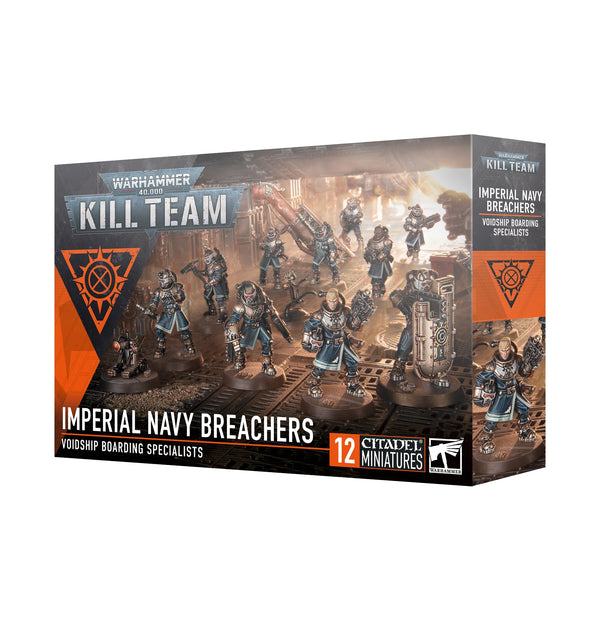Recommended Paint
Imperial Navy Breachers are aggressive elite fighting troops. They are blunt instruments instructed extensively in close-quarter fighting techniques, and excel in the confines of mighty spaceships or sprawling hive cities.
This multipart plastic kit builds a squad of 10 Imperial Navy Breachers, accompanied by two robotic supporters – the scanning C.A.T. Unit and explosive Gheistskull. These miniatures can be used as Imperial Navy Breacher operatives in games of Kill Team, or fielded in an Imperial Agents army in games of Warhammer 40,000. The kit includes interchangeable heads and accessories to customise your kill team, plus components to build specialists like the skilled Void-jammer, bulky Grenadier, and shield-toting Endurant.
Inside the box, you will also find a sheet of 38 double-sided Imperial Navy Breachers tokens, so you can easily keep track of your equipment and in-game effects in the heat of battle.
This kit contains 153 plastic components, 10x Citadel 25mm Round Bases, and 2x Citadel 28mm Round Bases.
These miniatures are supplied unpainted and require assembly – we recommend using Citadel Plastic Glue and Citadel Colour paints.
Product title
Vendor
£19.99 | £24.99
Product title
Vendor
£19.99 | £24.99
Product title
Vendor
£19.99 | £24.99
Product title
Vendor


















































